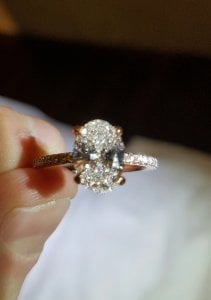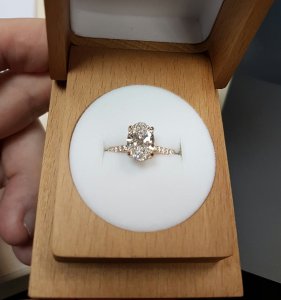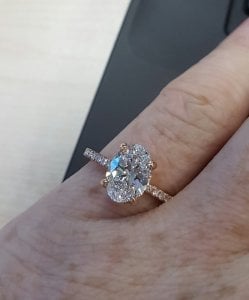Today I received my oval diamond engagement ring purchased online from BE (1.61 carat, F, very good cut, vvs2 ).
As with ovals, I was concerned about a potential bow tie effect so I made sure to go with a diamond that had optimal table and depth characteristics *and* that showed minimal bow tie effects in the 360° real image animation.
Unfortunately, the bow tie is significantly more severe than I expected. It was almost impossible to take a picture without dark shades prevalent: http://imgur.com/a/NkPs4
This is way different than what I saw online. The online video showed almost no signs of bow tie. Here is the link to the exact diamond I bought along with the real image preview: https://www.brilliantearth.com/search/?q=2339522
Seeking advice on whether I should return the ring and if you have any tips on avoiding this issue on a future replacement.

As with ovals, I was concerned about a potential bow tie effect so I made sure to go with a diamond that had optimal table and depth characteristics *and* that showed minimal bow tie effects in the 360° real image animation.
Unfortunately, the bow tie is significantly more severe than I expected. It was almost impossible to take a picture without dark shades prevalent: http://imgur.com/a/NkPs4
This is way different than what I saw online. The online video showed almost no signs of bow tie. Here is the link to the exact diamond I bought along with the real image preview: https://www.brilliantearth.com/search/?q=2339522
Seeking advice on whether I should return the ring and if you have any tips on avoiding this issue on a future replacement.






300x240.png)